7 Ways to Reduce Blood Sugar Spikes After Meals
By April Hopcroft
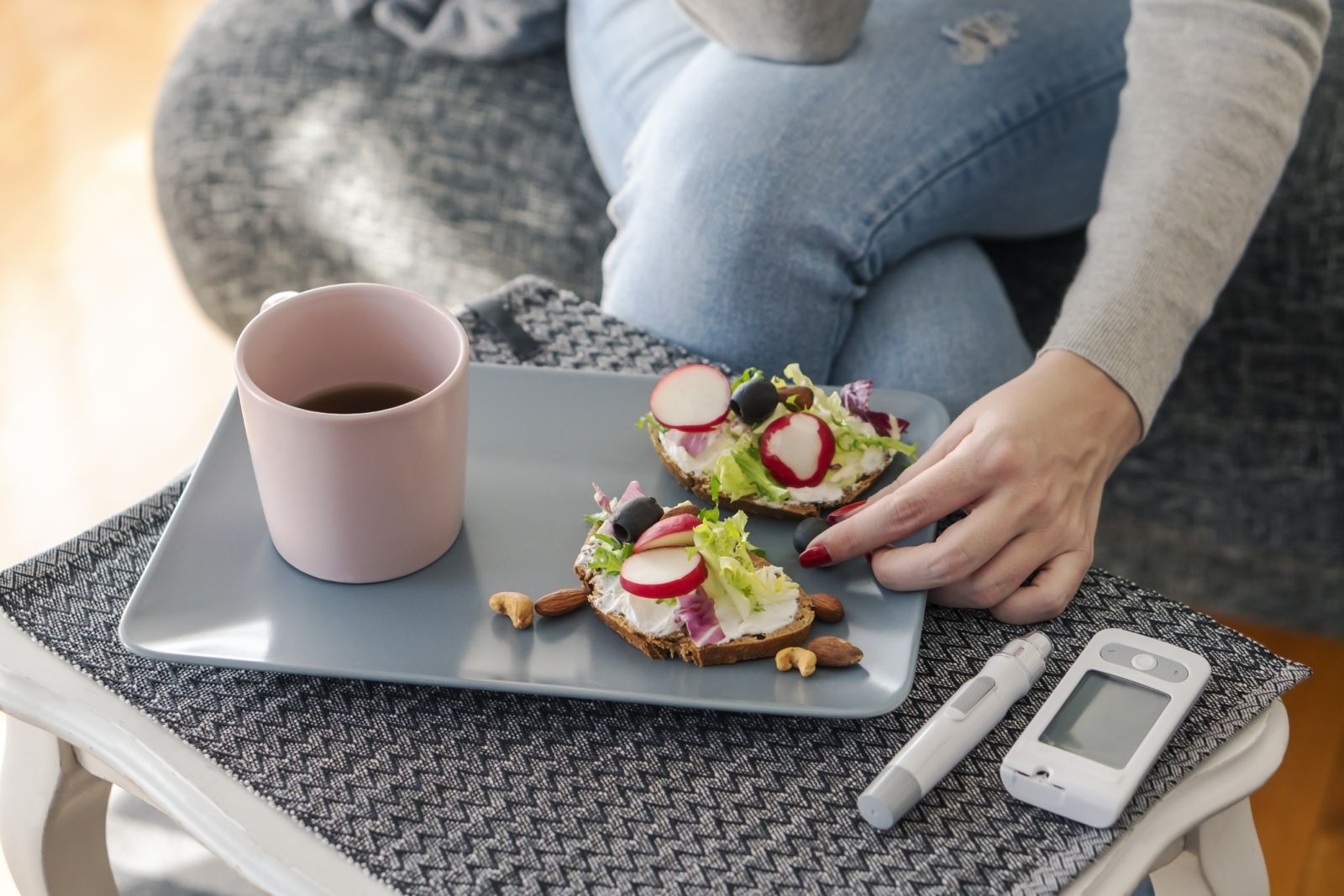 Many people with diabetes – even those using the latest technology – struggle with high blood sugar after eating. We spoke with experts for tips on how to minimize those stubborn glucose spikes.
Many people with diabetes – even those using the latest technology – struggle with high blood sugar after eating. We spoke with experts for tips on how to minimize those stubborn glucose spikes.
We’ve all been there: it’s been a long, demanding day at work and you’re excited to sit down for dinner at your favorite restaurant.
Or maybe you’re eager to watch the game and dig into a feast of wings, nachos, and sliders with friends and family. Perhaps you’ve been traveling or on your feet all day and are ready to gobble up the first food you encounter.
Regardless of the situation, it’s likely you don’t want to take the time to bolus and wait for your insulin to kick in before you start eating. After all, meals are often a social activity, and it’s no fun to wait while others are chowing down.
But as the meal wears on, you catch a glimpse of your phone and are startled to see your blood sugar is well into the 200s and rising. Soon, you start to recognize the telltale signs of high blood sugar: achiness, fatigue, and a general feeling of unease.
There’s no doubt about it – navigating meals can be tricky when you have diabetes. Even among people who use automated insulin delivery (AID) systems, research suggests that achieving postprandial glycemic control can be difficult.
Why do blood sugar spikes after meals happen?
Sudden increases in blood glucose after eating are normal, even in people without diabetes. After consuming carbohydrates, blood sugar levels rise as our bodies break carbohydrates down into sugars.
In people without diabetes, this increase in blood sugar triggers the immediate release of insulin. Within minutes, insulin starts transporting glucose from the bloodstream into cells, helping to reduce blood sugar after eating. Post-meal blood glucose spikes are usually temporary and often go unnoticed in those without diabetes.
However, in people with diabetes, blood sugar spikes can be more pronounced and last longer. Insulin delivered via injections or an insulin pump takes longer to start working compared to the insulin produced naturally by the body, meaning blood glucose will continue to rise while the injected insulin kicks in.
People with diabetes have other hormonal differences that can affect the speed of digestion. Those without functional beta cells also cannot produce the hormone amylin, which helps slow digestion and reduces post-meal glucose. That means people without enough amylin may experience challenges with high glucose levels after eating.
If you’ve been struggling with post-meal hyperglycemia, take stock of your current circumstances and if you’ve experienced major life changes recently, suggested LaurieAnn Scher, certified diabetes care and education specialist.
Have you experienced stressors, such as studying for a big exam, switching jobs, or moving? This can trigger the release of stress hormones like cortisol, which can promote weight gain and affect metabolism, including insulin resistance.
Maybe your eating or exercise patterns have shifted, perhaps due to changes like starting college, moving in with a partner, or navigating parenthood. Diet changes can lead people to gain more muscle or fat. With a different proportion of fat and muscle mass, insulin resistance can fluctuate, impacting your insulin needs, Scher added.
Many other factors can affect insulin resistance and blood glucose management, such as using birth control, environmental conditions, dehydration, and more.
Why is it important to reduce blood sugar spikes?
High blood sugar after meals raises your risk of diabetes complications, including kidney disease, cardiovascular disease, and diabetic neuropathy. Post-meal hyperglycemia can also affect quality of life, leading to negative effects on mood, diabetes distress, and issues like brain fog or sluggishness.
To put it simply, high blood sugar after eating “doesn’t feel great, and it can be hard to think and see,” said Scher.
Research also suggests that better glycemic control after meals is linked to improved A1C and fasting glucose levels.
According to the American Diabetes Association 2024 Standards of Care, you should aim for blood sugar to be less than 180 mg/dL within 1-2 hours after you start eating. By contrast, in most people without diabetes, two-hour postprandial blood sugar levels are typically less than 120 mg/dL and rarely exceed 140 mg/dL.
How to prevent blood sugar spikes after eating
From medications to diet and physical activity, there are many different strategies to prevent bothersome blood sugar spikes after meals. As with all parts of diabetes care, it’s important to recognize that what works for one person may not work for someone else.
“It’s all about tailoring to the patient’s needs, comfort level, background, what they’ve tried, and what they’re willing and interested in,” said Rina Hisamatsu, a registered dietitian at the Michigan Collaborative for Type 2 Diabetes (MCT2D).
1. Experiment with different insulins and dose timing
For any diabetes medication, Scher advised, “Don’t set it and forget it.”
That is, you should regularly examine basal and bolus insulin, along with your other medications. You may need to adjust your insulin regimen and tweak bolus doses and timing throughout your life.
There are several different types of mealtime insulin, each with its own time to onset of blood glucose lowering:
The timing of rapid-acting insulin plays a big role around mealtime. For some meals, you may need a 30-minute pre-bolus before, while others might require a shorter pre-bolus of 10-15 minutes before eating.
Some people find they prefer an extended bolus, which means the insulin is delivered over an extended period, instead of all at once.
Digestion rate also factors into the timing of mealtime insulin, especially for people with conditions like gastroparesis or exocrine pancreatic insufficiency.
2. Try a short amount of physical activity
Being active for even just a few minutes after eating can help lower blood glucose and prevent blood sugar spikes.
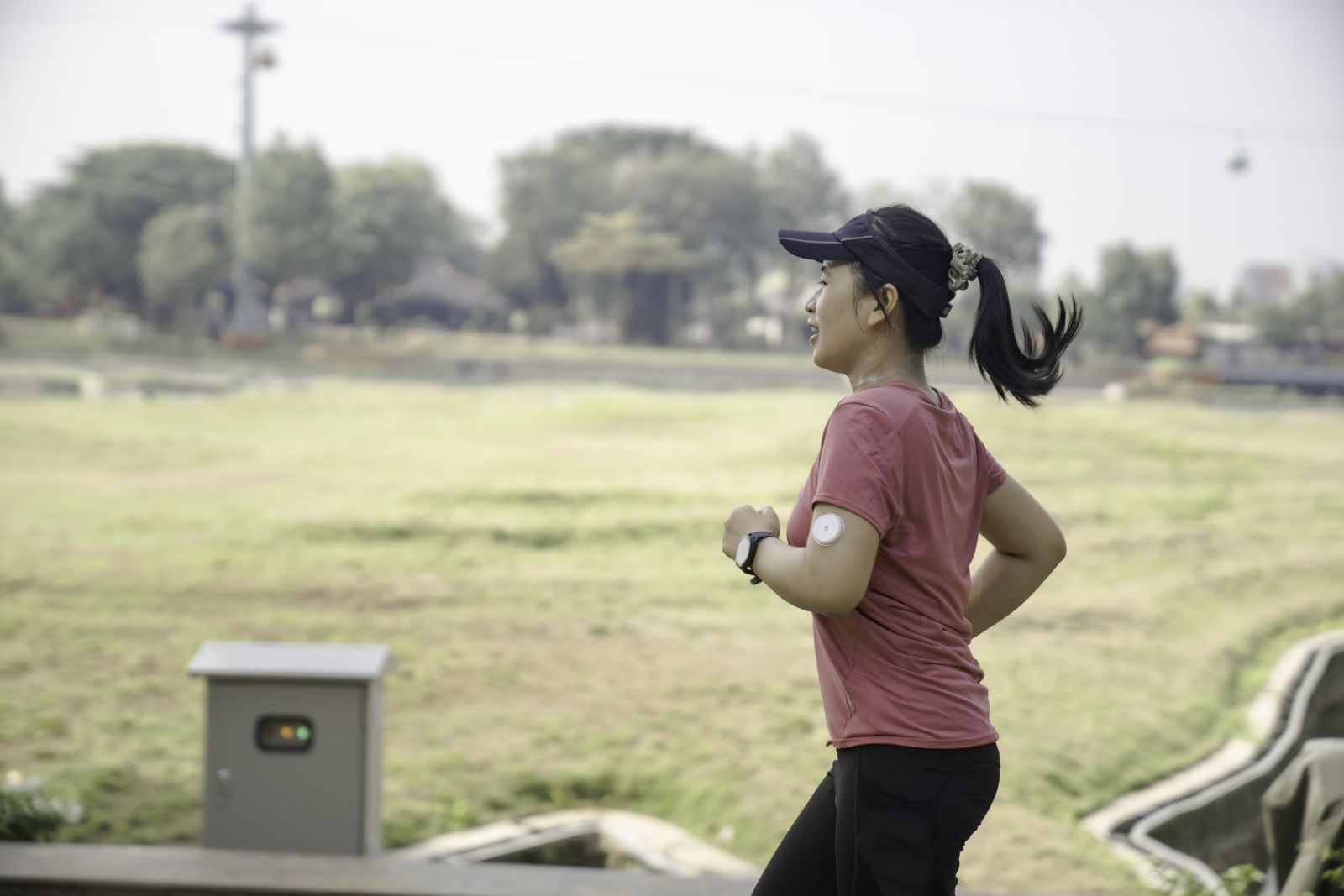 Any movement is better than no movement, no matter how small. And most importantly, Hisamatsu said, try to find an activity that you enjoy so that you can make it a sustainable habit.
Any movement is better than no movement, no matter how small. And most importantly, Hisamatsu said, try to find an activity that you enjoy so that you can make it a sustainable habit.
Taking a walk – whether inside your apartment, around the block, or on a bike path – goes a long way toward regulating glucose. Beyond taking a stroll, there are many other options for short bursts of exercise like:
-
Climb a set of stairs in your house or workplace.
-
Jump rope, jog in place, or do jumping jacks – these take up very little space.
-
Do squats at your desk. Since squats exercise the largest muscles in your body (your glutes and quads), they are very effective at lowering glucose. “The quads and glutes are like sponges, they suck up all the glucose and use it much more readily than smaller muscles,” Scher said.
-
Have a dance party – put on your favorite songs and jam out to your heart’s content.
Research shows that breaking up a sedentary lifestyle every hour can improve insulin sensitivity (how efficiently your body’s cells respond to insulin) and post-meal glucose.
If you prefer to think ahead, consider the different types of exercise that you can do throughout the day that increase insulin sensitivity. Strength training before eating has been shown to improve post-meal blood glucose in people with prediabetes by enhancing insulin sensitivity. Likewise, research suggests that exercising before meals can increase insulin sensitivity and improve overall glycemic control in people with type 2 diabetes or gestational diabetes.
Of course, any form of exercise can lead to drops in glucose levels and cause hypoglycemia. If you use insulin, it’s therefore important to consider your insulin on board and take steps to prevent hypoglycemia during exercise, Scher said.
3. Eat high-fiber foods
In contrast to other carbohydrates, fiber can’t be digested by the body, so it has less of an impact on blood glucose levels. As a result, it helps you feel full and satisfied.
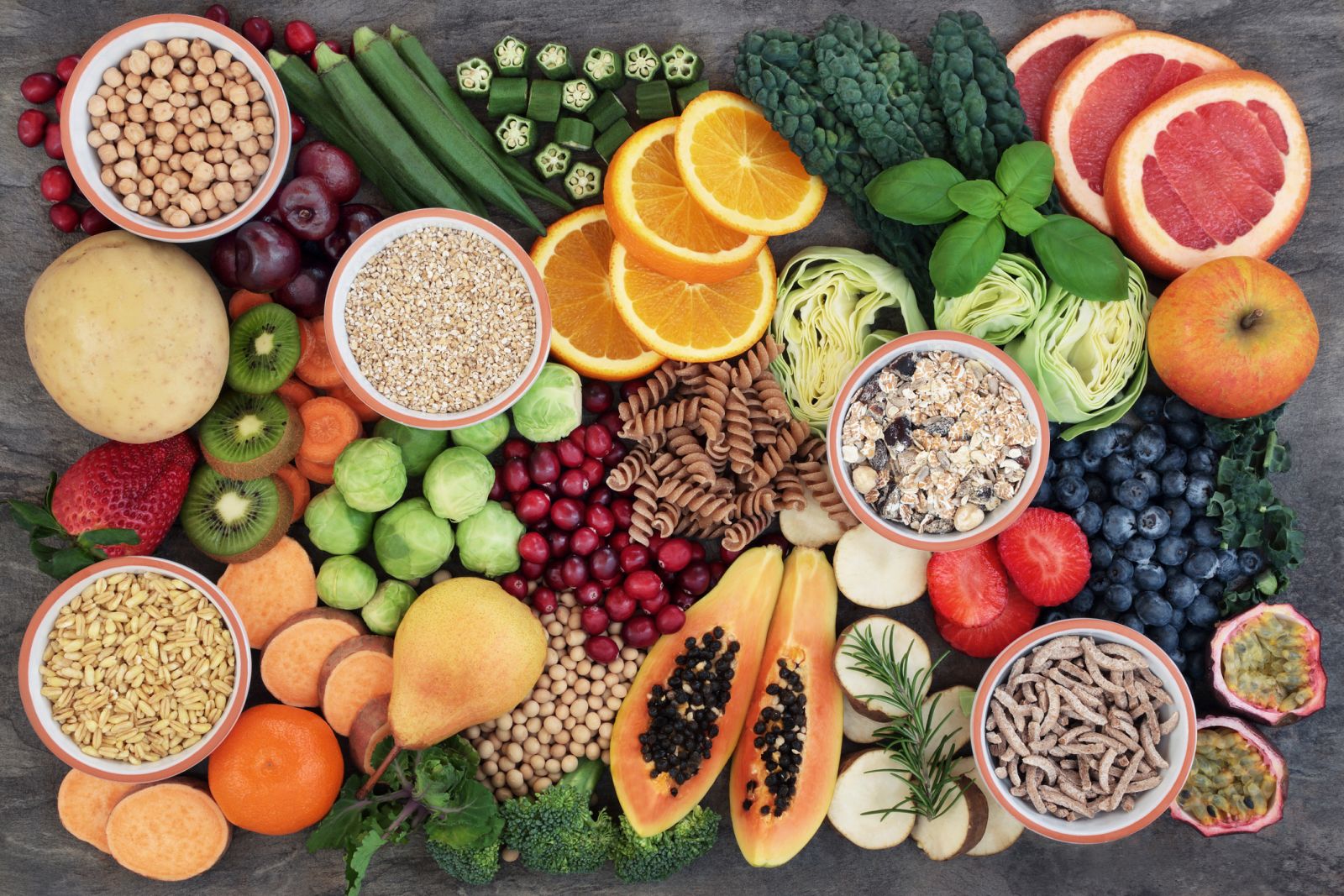 Fiber also plays a key role in the gut microbiome, helping sweep bacteria from the colon and keeping bowel movements regular. You can eat more fiber by adding fruits, vegetables, legumes, and whole grains to your diet.
Fiber also plays a key role in the gut microbiome, helping sweep bacteria from the colon and keeping bowel movements regular. You can eat more fiber by adding fruits, vegetables, legumes, and whole grains to your diet.
“We can consider fiber one of our best friends,” Hisamatsu said, as fiber-rich foods tend to be low-calorie but have a high nutrient density, particularly non-starchy vegetables.
Likewise, Scher said fiber is like a parachute. When you pair fiber-rich foods with carbohydrates, it helps prevent blood sugar spikes and also reduces rapid drops in blood sugar.
Adding too much fiber too quickly may cause some GI distress, so Hisamatsu suggested going “low and slow” when increasing fiber intake and making sure to stay adequately hydrated. Start by thinking of foods you already enjoy and try to add some vegetables or whole grains. For instance, add sauteed vegetables to spaghetti, tuck some beans into a quesadilla, or swap whole-grain bread for white bread.
4. Offset carbs with fat and protein
Understanding the different types of carbohydrates is key to managing post-meal blood sugar spikes.
“I’ve always said there’s nothing that a person with diabetes can’t eat, except poison and food with poison,” Scher said. “You can have cake, candy, etc. You’re human. You just need to learn how to manage it.”
Carbohydrates can be divided into two general categories:
-
Simple carbs are sugars. These carbs are broken down quickly and usually lead to big spikes in blood sugar. Examples include soda, baked goods, breakfast cereals, and fruit juice.
-
Complex carbs are broken down more slowly and lead to more predictable, gradual increases in blood sugar. Examples include beans, fruits, vegetables, and whole grains.
Hisamatsu suggested starting with “low-hanging fruit” by identifying parts of your diet where you tend to eat more refined or simple carbohydrates. Maybe you’re flying out the door to work in the morning, so breakfast has become a sugary granola bar. Or you crave fruit juice at lunch and a cookie for dessert.
Once you’ve identified those areas, consider ways to add more complex carbs and fiber-rich foods. Start with small modifications and try habit stacking to ensure sustainable changes.
Overall, Hisamatsu recommended focusing on increasing fiber and protein intake, while adding fat for flavor and fullness.
“When we can focus on a balance of different food groups, it can be helpful to improve one’s postprandial glucose,” she said.
5. Try setting a temporary basal rate
In the same way that some people choose to lower their basal insulin rate during exercise, you could consider temporarily increasing your basal rate by a certain percentage before or after meals.
Likewise, some insulin pumps allow you to set a lower pre-meal target, such as 80 or 85 mg/dL rather than 95 mg/dL before eating.
Setting a temporary basal rate can be helpful when you’re eating food that has significant refined carbohydrates in it, such as pastries, bread, pasta, pancakes, pizza, and even white rice. This strategy may be especially beneficial for those with more insulin resistance.
You might have to experiment through trial and error to figure out what works best for you. Consult your healthcare provider to find the ideal basal rate for mealtimes.
6. Use CGM as a tool to inform decisions
Continuous glucose monitors (CGM) provide valuable information that can help you manage post-meal blood sugar.
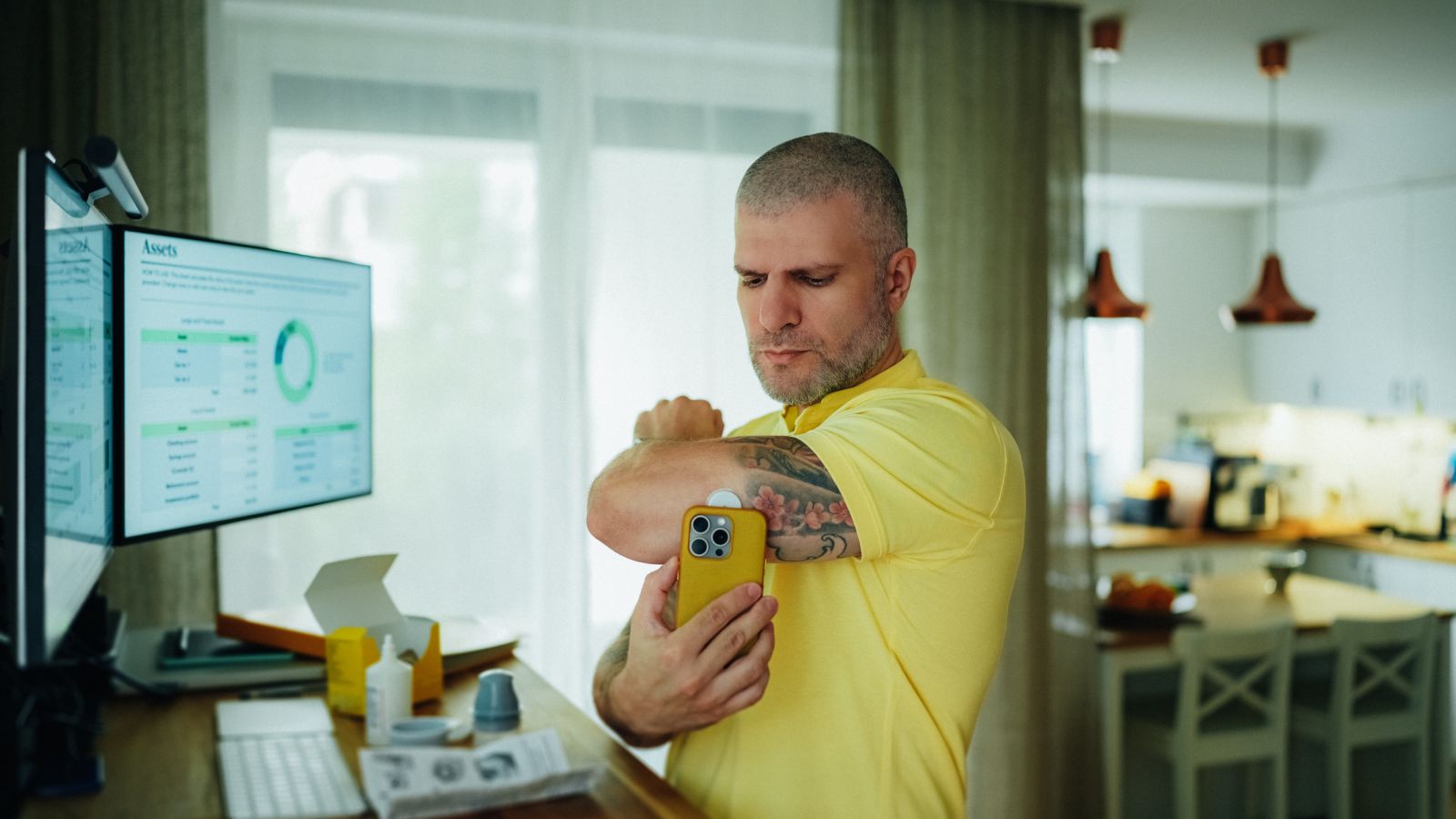 Since everyone responds differently to food, Scher said CGMs allow you to understand your body’s unique response. For instance, some people with diabetes can eat white rice without any blood sugar spikes, while many others will experience high blood sugar shortly after eating rice.
Since everyone responds differently to food, Scher said CGMs allow you to understand your body’s unique response. For instance, some people with diabetes can eat white rice without any blood sugar spikes, while many others will experience high blood sugar shortly after eating rice.
“Individuals with type 2 diabetes, whether or not they are on insulin therapy, may benefit from using a CGM,” Hisamatsu said. “In tandem with lifestyle change, CGM can be a helpful guide for patients to see real-time data and how food and lifestyle impact postprandial glucose which can help identify areas for improvement.”
The trend arrows on a CGM can help inform mealtime insulin dosing. Use time in range to identify patterns and make adjustments as needed – you might need a different insulin-to-carb ratio or correction factor depending on your mealtime.
Even if you have type 2 diabetes and your insurance doesn’t cover CGM, professional CGM may be an option for you.
“The trick is finding a provider in your area that will help you do a professional CGM trial,” Scher said. In most states in the U.S., insurance plans will cover one or two trials of professional CGM per year.
7. Stay hydrated
Staying hydrated throughout the day is crucial to many bodily functions, from regulating blood pressure to body temperature to blood glucose.
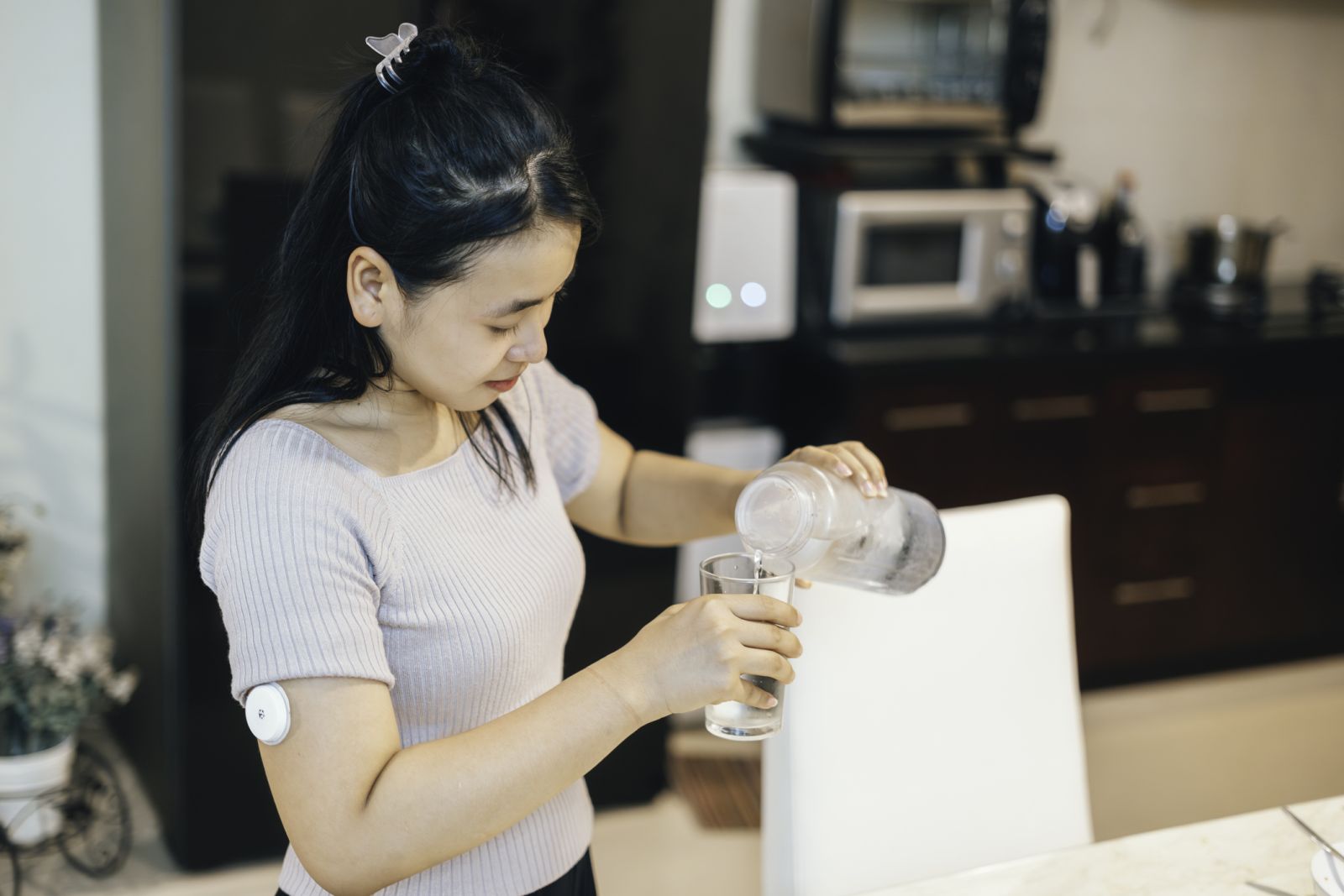 When you’re dehydrated, the amount of water in your bloodstream decreases, making the glucose in your blood more concentrated. This can lead to slightly higher blood sugar levels or cause rapid spikes.
When you’re dehydrated, the amount of water in your bloodstream decreases, making the glucose in your blood more concentrated. This can lead to slightly higher blood sugar levels or cause rapid spikes.
Indeed, research suggests that not drinking enough water leads to worse glucose control in type 2 diabetes. Dehydration can lead to a cycle of higher glucose levels, so it’s especially important to hydrate well when it’s hot outside.
Whether it’s investing in a colorful water bottle or pairing hydration with your morning coffee, be sure to get your fluids in.
The bottom line
Blood sugar spikes after meals are a common part of life when you have diabetes. While having a consistent meal structure can help prevent large spikes, it isn’t always possible to plan all your meals.
To manage post-meal blood glucose levels, it’s a good idea to build a “toolbox” of strategies. Everyone is different, so you may need to go through some trial and error to figure out what works best for you.
“We’re not test tubes,” Scher said. “What works for one person, may not work for someone else.”
It’s also important to know when to reach out to your healthcare provider for professional advice.
“We’re here to support you and to work as a team,” Scher said. “If something doesn’t feel right, let’s work as experts together to help figure it out.”
Learn more about managing high blood sugar here:







